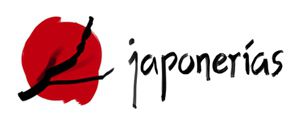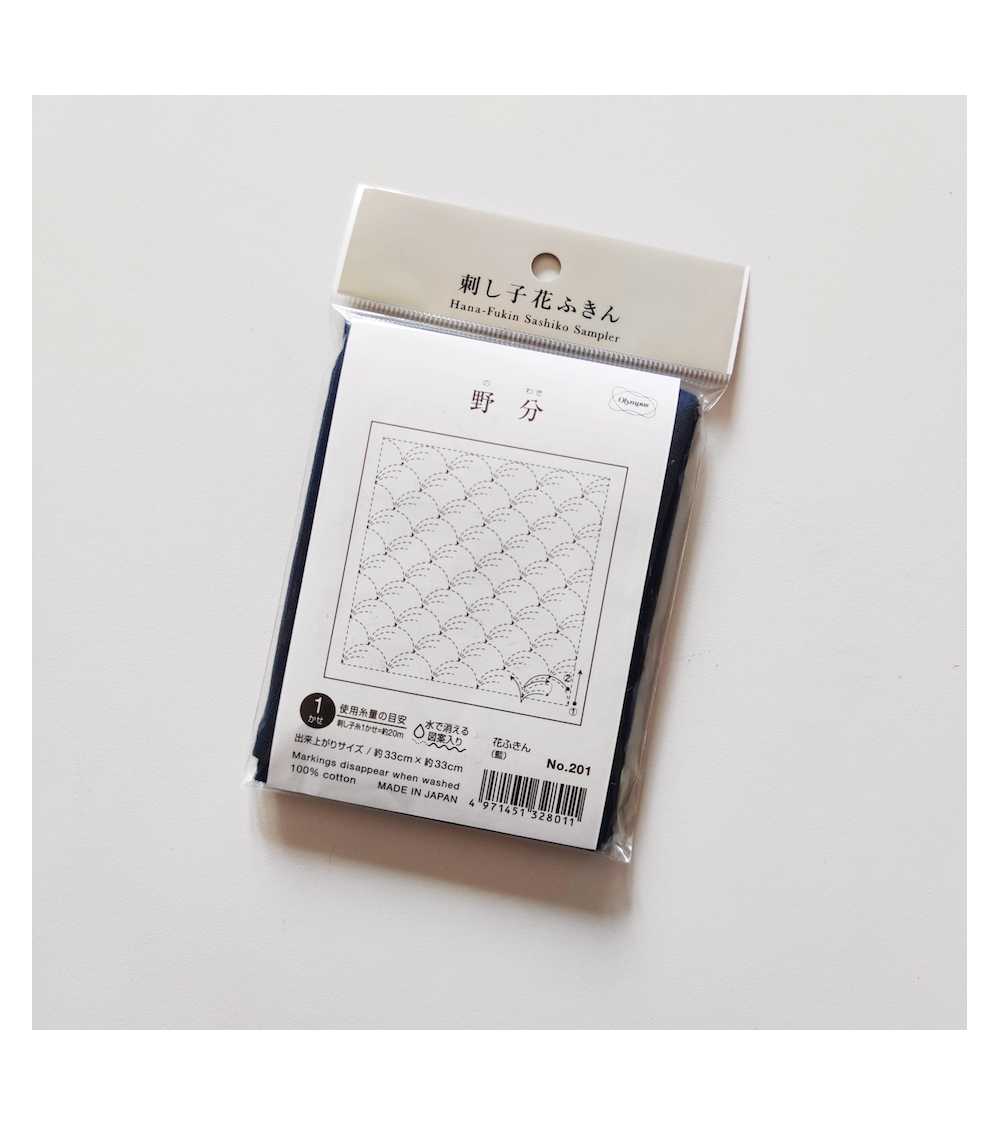Hana Fukin "Seigaiha". Preprinted cloth with instructions for Sashiko.
Hana Fukin "Seigaiha". Preprinted cloth with instructions for Sashiko.
Indigo blue cloth, pre-printed with a wave pattern (seigaiha) for Sahiko, or Japanese embroidery, by Olympus. Ref #201.
The size of the cloth is 66x33cm. The pre-printed square with the motif takes up approx. 30x30cm of the total cloth, with a border of approx. 1.5 cm all around. This leaves a 33x33cm square of plain fabric next to the motif, so you can use it as a backing for the cloth, for folding its thickness, or as the back of a cushion, bag, etc.
An instruction booklet is also included. Although the text is in Japanese (which you can translate with Google translator), it includes very clear graphics and illustrations that indicate how to start and finish the work, how to change yarns, and the order of the stitches so that the reverse side of the pattern is as clean as possible.
Hana Fukin literally means "flower cloth", and is a sashiko embroidered cloth, about 30-32cm long, which was used in Japanese homes as a towel to dry hands, could be used for decorative purposes, or placed on a plate or platter to enhance the presentation of food.
DO NOT WASH THIS FABRIC BEFORE USE, as the pre-printed pattern will disappear after washing.
If you need Sashiko needles, thimbles or threads you can see them all in our SASHIKO section.
You can find patterns, ideas and uses on our Pinterest board, Sashiko.
The sashiko was used to patch and reinforce the garments that were wearing out. Although it was intended to be practical, over time a number of patterns were developed so that while the garments were repaired, they were also embellished.
This sewing technique, which arose out of necessity due to the lack of materials, gave rise to boron. This was the name given to these garments, often fishermen's and farmers' coats, which were formed by joining each small piece of fabric that covered holes and tears, by means of sashiko stitches. This textile art is very appreciated today by collectors, although it contains in its essence that origin of scarcity and hardship, and the ability of the Japanese people to overcome it.
The boro garments used to be made with indigo dyed cotton fabrics, or with pieces of kasuri (or ikat) fabrics, or decorated with the katazome technique. The gathering of these small scraps into one garment, joined with long rows of stitches, or sewn together to form patterns with exposed stitches, resulted in a beautiful mosaic that perfectly reflected the essence of the Japanese word "Mottainai", which expresses regret for any wasted resource.
Characteristics:
Brand: Olympus
Material: 100% cotton
Country of origin: Japan





